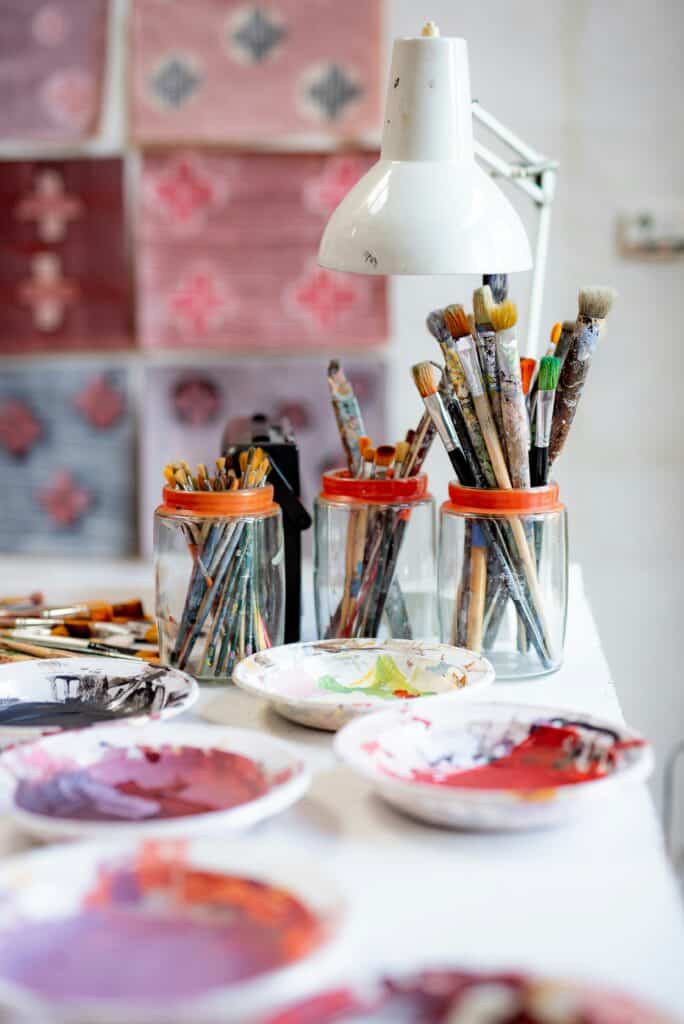
Learn the ins and outs of applying to an art residency with our comprehensive guide. Discover tips, advice, and essential steps to enhance your chances of acceptance and make the most of this incredible opportunity.
Format Team February 8, 2024
![]()
![]()
![]()
An art residency (or artist residency) is a structured program that provides artists with unique experiences that can grow their creativity and help them develop professionally. These programs are available locally as well as around the world, ranging from urban centers to remote landscapes, and cater to a wide range of artistic disciplines. Art residencies are highly regarded in the artistic community for the invaluable opportunities they offer artists to develop their work, engage in critical dialogue, and foster professional growth.
1. Uninterrupted creative time and space: Art residencies offer artists the opportunity to focus solely on their artistic practice, free from the distractions and responsibilities of everyday life. This uninterrupted time and space allow you to immerse yourself in your work, discovering new ideas and experimenting with different techniques or concepts.
2. Access to resources and facilities: Residencies often provide artists with access to special resources and facilities that may not be readily available in their usual studio or workspace. This can include well-equipped studios, graphics and media labs, wood workshops, or darkrooms. The availability of these resources opens up new possibilities and encourages you to push the boundaries of your artistic practice.
3. Exposure to diverse perspectives and communities: Art residencies bring together artists from different backgrounds, cultures, and artistic disciplines. This multicultural and interdisciplinary environment favors the exchange of ideas, dialogue, and collaboration. Artists have the opportunity to connect with other residents, visit local artists and communities, broaden their perspectives, and deepen their understanding of different art practices and cultural contexts.
4. Networking and professional development: Artist residencies often facilitate networking with curators, gallery owners, critics, and other artists. These connections can lead to collaborations, exhibitions, and other professional opportunities. In addition, many residencies host artist talks, workshops, and reviews, providing you with valuable feedback, mentorship, and opportunities to promote your art.
5. Exploring new environments and influences: Residencies in diverse locations, whether rural, urban, or international, expose artists to new landscapes, cultures, and artistic traditions. These new environments can inspire and influence your work, encouraging experimentation and pushing artistic boundaries. You can incorporate elements of local culture, nature, or social context into your practice, adding richness and depth to your artistic expression.
6. Reflection, self-discovery, and artistic renewal: Art residencies offer artists the opportunity to break away from everyday life and engage in self-reflection. The special time and space offered by residencies encourages introspection and allows artists to question and explore their artistic motivations, goals, and processes. This self-discovery can lead to new inspiration, artistic breakthroughs, and the development of a more authentic and refined artistic voice.
Here are the key factors to check when selecting an art residency program that best fits your artistic practice and goals:
1. Location: Determine if you prefer an urban setting or a remote natural setting. Urban residences offer proximity to cultural institutions, galleries, and a vibrant arts scene, while rural or remote residences offer a tranquil retreat surrounded by nature, offering solitude and inspiration while you create new work or consider the perspectives on your current body of work.
2. Duration: Determine the duration that you can devote to the residency. Some programs offer short stays of several weeks, while others offer longer stays of several months. Consider your availability and the time you need to immerse yourself in your artistic practice fully.
3. Facilities and resources: Assess the facilities and resources available to artists. Look for residencies that offer well-equipped studios, specialized equipment, and access to materials specific to your artistic discipline. Determine if the program provides resources such as print shops, digital labs, or wood workshops that meet your artistic needs.
4. Support and mentorship: Find out about the level of support and mentorship the residency program offers. Some programs offer mentoring from established artists or curators, while others offer workshops, reviews, or interviews with artists. Consider if the program offers opportunities for professional development and guidance to enhance your artistic practice.
5. Funding and financial considerations: Evaluate the financial aspects of the residency program. Some residencies offer financial support in the form of stipends, grants, or scholarships, while others require artists to cover their expenses. Consider your budget and explore funding options to ensure the program is within your budget.
6. Community and networking opportunities: Assess the residency’s community and networking aspects. Look for programs that offer opportunities to interact with other artists, curators, and art professionals. Consider whether the residency will facilitate connection with local communities and provide platforms to showcase your work.
7. Reputation and alumni success: Examine the residency program’s reputation and the success of its alumni. Look for testimonials or references from previous residents to gauge their experiences and accomplishments. Consider whether the program has a track record of supporting and nurturing artists in the past.

Here are some in-depth tips to help you navigate the application process and submit a compelling application that increases your chance of acceptance into an artist residency:
Here are three key points to consider when trying to navigate the selection process of an art residency program:
1. Understanding the evaluation criteria
Residency programs typically have specific evaluation criteria, which may include artistic merit, originality, project feasibility, alignment with the residency’s theme or mission, and potential for artistic growth. See the program selection guidelines or contact the residency coordinator directly to understand their evaluation process. Tailor your application materials to highlight the aspects most relevant to their criteria. Keep in mind that the selection process is subjective, involving a diverse panel of artists and art professionals.
2. Managing expectations
Prepare for different outcomes and manage your expectations. Understand that residency spots are competitive, and even highly qualified artists may not always receive acceptance. Rejection does not diminish your artistic worth, as each program has its own preferences and limitations. Use it as an opportunity for self-reflection and growth. Seek feedback from the program, if available, to improve future applications. Stay positive and explore other opportunities. There are numerous residencies and artistic ventures that may align with your practice.
3. Dealing with notifications and moving forward
Once notified, if accepted, celebrate your accomplishment and make necessary arrangements for the residency period. In the case of rejection, process any disappointment and reassess your goals. Use it as motivation to seek feedback and consider other residencies or opportunities. If waitlisted, remain open to other possibilities while being prepared to respond promptly if an offer arises. Regardless of the outcome, persevere in your artistic practice, seek new opportunities, and stay involved in the art scene. Maintain a positive attitude, nurture your creativity, and continue developing your portfolio and artist statement for future applications.